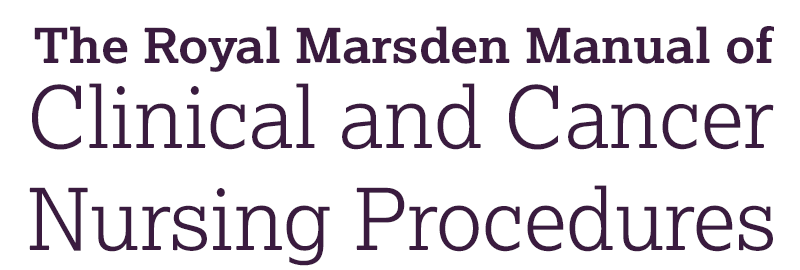Chapter 3: Discharge care and planning
Skip chapter table of contents and go to main content
Complex discharges
Definition
For patients requiring specific support on discharge, proactive and systematic planning is essential (Winfield and Burns [54]). A complex discharge may be considered when:
- a large package of care involving various agencies is required
- the patient's needs have changed since admission, with different services requiring co‐ordination
- the family and/or carer require intensive input into discharge planning considerations (e.g. psychological interventions)
- the patient is entitled to NHS Continuing Healthcare and requires a package of care on discharge
- the patient requires repatriation
- there is dispute among the family about where the patient should be discharged to or what their care needs are
- the patient is homeless.
Related theory
Patients who have specific social or specialized care needs, who have funding issues or who require a change of residence may have a complex discharge need (Lees‐Deutsch et al. [23]) and may require referral to the hospital's discharge team. Hospital trusts may have different titles for staff within the discharge team, but essentially their role is to co‐ordinate plans among all involved by liaising with the multidisciplinary team both within the hospital and in the community. In this way they act as ‘knowledge brokers’ to facilitate sharing and co‐ordination (Waring et al. [52]).
If a patient has dementia or a learning disability, the approach to their discharge needs to be carefully planned and tailored to meet their specific additional needs (Poole et al. [43]). If, for example, the patient has been assessed as lacking capacity to make a decision under the Mental Capacity Act ([27]) about where they should live, then a ‘best interest’ decision must be made, ensuring that family and carers are involved. Where the patient is assessed as lacking capacity and has no relatives or friends and so is ‘un‐befriended’ (as defined by the Mental Capacity Act [27]), a referral should be made to a local independent mental capacity advocacy service to ensure the patient gets the required support (Mental Capacity Act [27]). Where there is a concern that a person has a degree of cognitive impairment, it can easily be assumed that they cannot return home or that they need care. These assumptions should be challenged and decisions made on the basis of a needs assessment, which should include a mental capacity assessment. The assessment should evidence that the principles of the Mental Capacity Act ([27]) have been applied and that any decisions have been made in the person's best interests. For more detailed information on the principles of capacity and safeguarding, see Chapter c05: Communication, psychological wellbeing and safeguarding.
Evidence‐based approaches
NICE ([37]) recommend several key principles of care and support that should be considered for more complex patients during the transition from a healthcare facility to home:
- Person‐centred care: see everyone as an individual, involve families and carers, and identify those at risk.
- Communication and information sharing: provide appropriate information in the right format at the right time and ensure discussions take place with all involved.
- Discharge co‐ordinator: a dedicated individual who works with the multidisciplinary team and involves carers and families in discussions about the care being proposed.
- Develop a discharge plan: this should include details about the person's condition, medicines and practicalities of daily living, and should detail which services and sources of support are involved.
- Plan for care following discharge: ensure follow‐up arrangements are made and communicated effectively.
- Readmission risk: ensure those at risk of readmission are referred to appropriate community‐based health and social care teams prior to discharge.
For patients who may have additional needs on discharge, it is worth exploring what support services may be available and identifying what services were in place prior to admission. For example, if the person has a learning disability, they may have a learning disability nurse in the community. If so, involving the nurse in the patient's discharge will ensure a safer transition for the patient by enabling access to a professional who has knowledge and expertise in the field of learning disabilities but also in the needs of the patient.
Principles of care
A comprehensive assessment is initially required to ascertain a patient's discharge needs. Joined‐up inter‐professional care and good carer partnerships can then be established to facilitate safe and seamless transfer of care of the patient from the hospital back to the community (Teodorczuk et al. [49]) (Table 3.1).
Table 3.1 Procedure for the assessment process for complex discharges
| 1 Nurse conducts a comprehensive assessment on admission | |
| |
| For example, occupational therapist, physiotherapist, social services or discharge co‐ordinator |
| For example, district nurse or community palliative care team. |
| 2 Multidisciplinary team discuss the case at the ward multidisciplinary meeting | |
|
|
|
|
|
|
| 3 Discharge co‐ordinator arranges family meeting or case conference | |
|
|
| 4 Ward staff or discharge team make referrals to appropriate community services | |
| To include district nurses, community palliative care team, community physiotherapists etc.
|
| The Social Services Assessment Notification (see Figure 3.7 for an example) must be sent at the earliest opportunity and no later than 72 hours prior to discharge. |
|
For example, hoist, hospital bed, pressure‐relieving mattress or cushion, commode or nebulizer. Additionally:
|
| Medical team to complete Home Oxygen Ordering Form (HOOF) and Initial Home Oxygen Risk Mitigation Form (IHORM) for oxygen cylinders and concentrators at home. Fax or email to relevant oxygen supplier. |
| 5 Ward staff or discharge team confirms the discharge date and finalizes the community arrangements | |
|
The provisional date is agreed with the patient and their family and/or informal carer(s). The actual date will then depend on when the following community services can be arranged:
|
| Ensure the family is informed of the delivery date and knows to contact the ward to confirm receipt of the equipment in the patient's home. |
| For example, Social Services, community nurse or community palliative care.
|
| 6 Ward staff or discharge team co‐ordinates the hospital discharge processes | |
|
|
|
|
|
|
|
|
| 7 Confirm arrangements 24 hours prior to discharge | |
| For example, infection status update or confirmation of hospital equipment required by patient. |
| 8 After discharge, ward nurse or discharge co‐ordinator makes a follow‐up phone call to the patient (as agreed) | |





